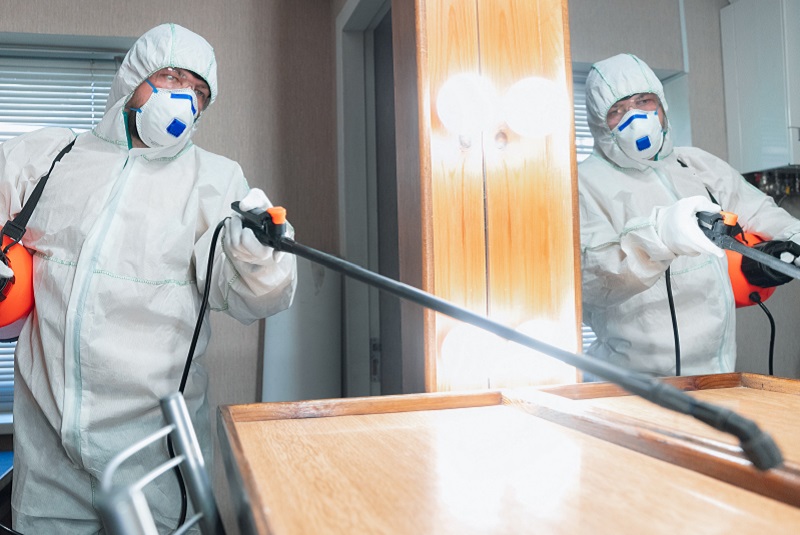
However, the pros of creating a hygienic retail environment are endless - it increases shopper dwell time, creates brand loyalty and gets you repeat customers. Clean and pleasant smelling retail facilities that emphasize a hygienic environment as one of their core activities rate better in customers shopping experience.
Good washroom facilities also play a vital role in creating a pleasant shopping experience and impact your customers' decision to return. However, most retail facilities do not think beyond restroom hygiene and general signages. Customers expect you to maintain a certain standard of cleanliness within your retail facility, and not living up to those expectations can prove to be detrimental for your business. It can reflect on your brand image, reduce the length of stay and spend and even drive people away.
“Placing hand sanitizer and signage in breakrooms and common areas is a step in the right direction. But, studies show it simply isn’t enough to make a real impact. Targeting “hot spots” with hand and surface hygiene protocol is a key step towards reducing the spread of germs. Objects that are touched by lots of people throughout the day — such as shopping carts, doorknobs and touch screen credit terminals — should be cleaned and disinfected daily in order to help break the chain of germ transmission,” suggests Kimberly Clark Professional
Why maintain hygiene?
A research compiled by Kimberly Clark Professional suggests that almost 50 percent of shopping trolleys tested found E.coli on their surfaces. These germs may be transferred from the trolley to hands, to food and the face.
Studies have also shown that approximately 66% of shoppers admit to reducing their shopping time because of unacceptable hygiene.
In the retail industry, this could:
- Drive traffic to your competitors.
- Reduce the overall spend of a customer.
- Drive people away, never to return.
In other words, it could be a fatal blow to the business.
Hygiene recommendations from Kimberly Clark Professional
Keep cleaning, sanitizing and disinfecting. But begin with understanding the difference between the three.
“Understanding the difference between cleaning and disinfecting enables facilities to manage hygiene more effectively and prioritise frequently touched surfaces”, says Ahmad Abublan, General Manager (Middle East and North Africa), Kimberly-Clark Professional.
CLEANING removes germs, dirt, and impurities from surfaces or objects. It works by using soap (or detergent) and water to physically remove germs from surfaces. This process does not necessarily kill germs, but it lowers their numbers and the risk of spreading infection.
SANITIZING lowers the number of germs on surfaces or objects to a safe level, as judged by public health standards or requirements. This process works by either cleaning or disinfecting surfaces or objects to lower the risk of spreading infection.
DISINFECTING kills germs on surfaces or objects. It works by using chemicals to kill germs on surfaces or objects. This process does not necessarily clean dirty surfaces but by killing germs on a surface after cleaning, it can further lower the risk of spreading infection.
Hotspots to be cleaned
❖ Entrances
Hygiene begins at your doorstep, and so does a good impression. The entrance to any retail store is the customer's first glimpse of it. It is also one that every customer is bound to visit and touch. This also means that entrances are hotspots for germ transmission. Here’s what you can do:
- Ensure high-traffic areas such as entrances and high-touch surfaces such as counters and hand-rails are free of dirt and sticky handprints.
- 80% of the dirt in buildings comes in off the street on your customers’ shoes. Placing entrance mats is the key.
- Eliminate air odour by installing air fresheners or air purifiers.
- Approximately 80% of infectious diseases are transmitted by touch.
- Ensure hand and surface sanitisers are available to kill germs and help prevent the spread of infection.
❖ Washrooms
A recent study reveals that an average of 75% of people surveyed say that washroom facilities in retail environments are extremely important. In fact, more than 20% of people would leave a retail store earlier than planned if they know the washroom facilities to be unhygienic. Here’s what you can do:
- While you focus on removing visible soils, don’t forget high risk areas such as feminine hygiene facilities, handles and areas around the sink.
- Ensure adequate provisions are available for washing and drying of hands and sanitary waste disposal.
- Install no-touch fixtures. They help in reducing transmission of germs.
❖ Food courts
Open kitchens in food courts are visible to your customers and speak volumes about how much your management team cares about them. Here’s what you can do to maintain hygiene in food courts:
- Wipe the chairs thoroughly and after each use to reduce the risk of surface to hand contamination.
- Ensure sinks are clean and have the right hand wash, drying and sanitising facilities.
- Train and educate your staff on appropriate hand wash and glove usage procedures.
- Ensure kitchen surfaces are regularly cleaned.
- To further minimise cross contamination provide a hand sanitiser.
❖ Baby changing and play areas
The Centres for Disease Control and Prevention (CDC) reports that 80% of all infections are transmitted by hands. Hands are a natural breeding ground for germs and this holds true especially for children, who always keep touching objects. Here’s what you can do:
- Play equipment and toys should be regularly wiped down and sanitised to ensure germs are not spread.
- Door handles and common surfaces are often overlooked when cleaning. Ensure a good cleaning program and provide access to hand sanitisers to minimise the risk of cross-contamination
Hotspots to be cleaned - An overview by Kimberly Clark Professional


.jpg)
.jpg)
 Search
Search


